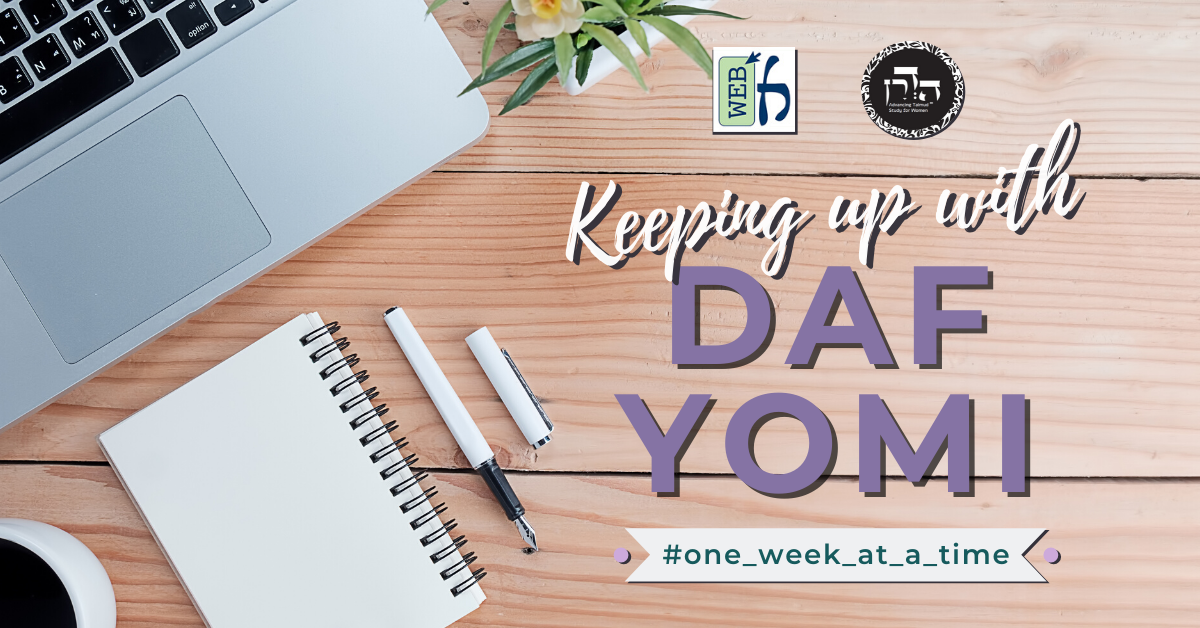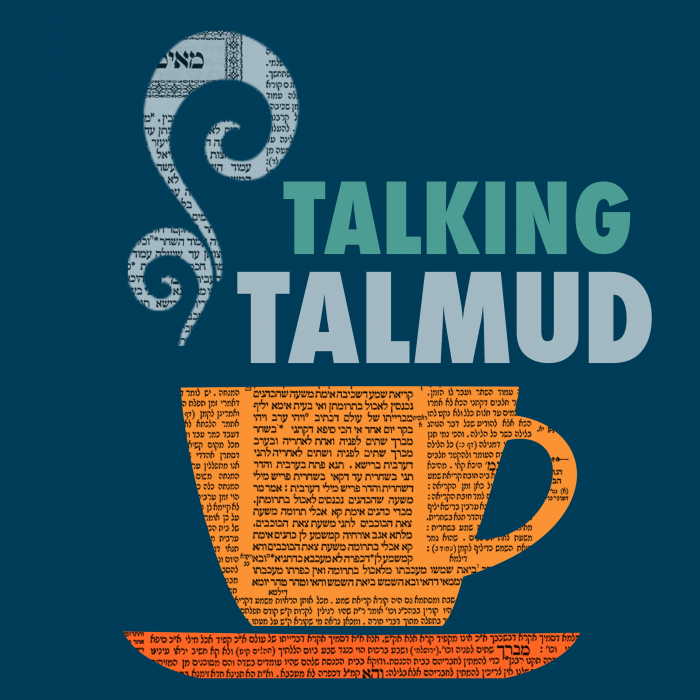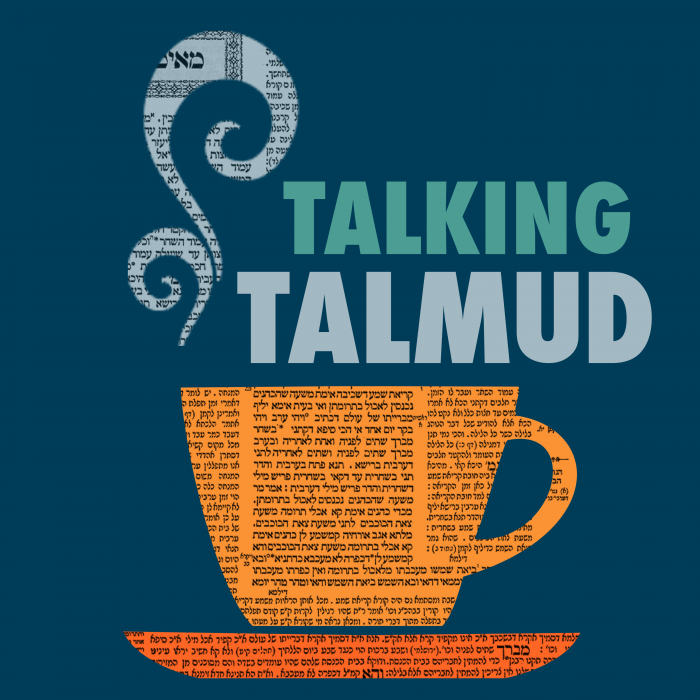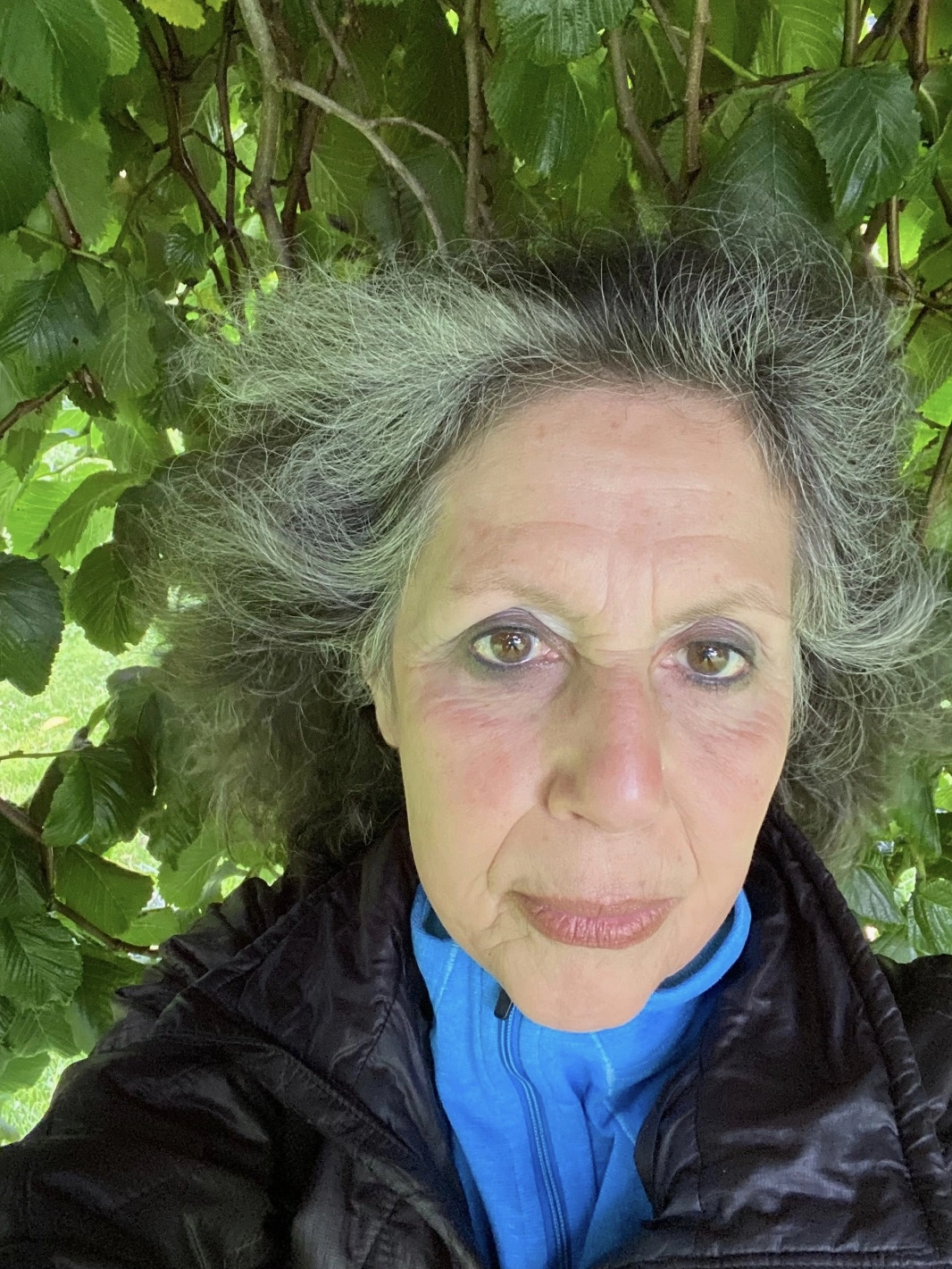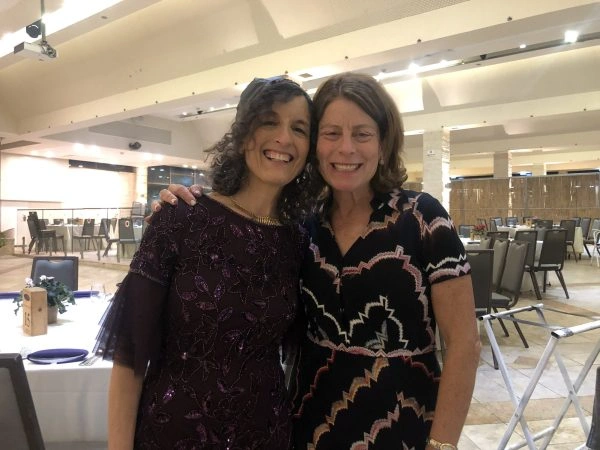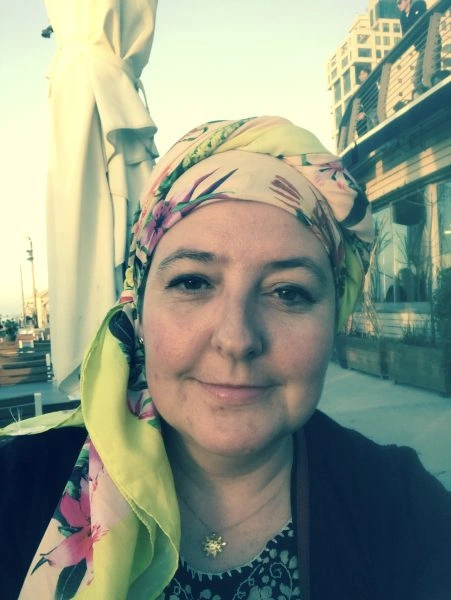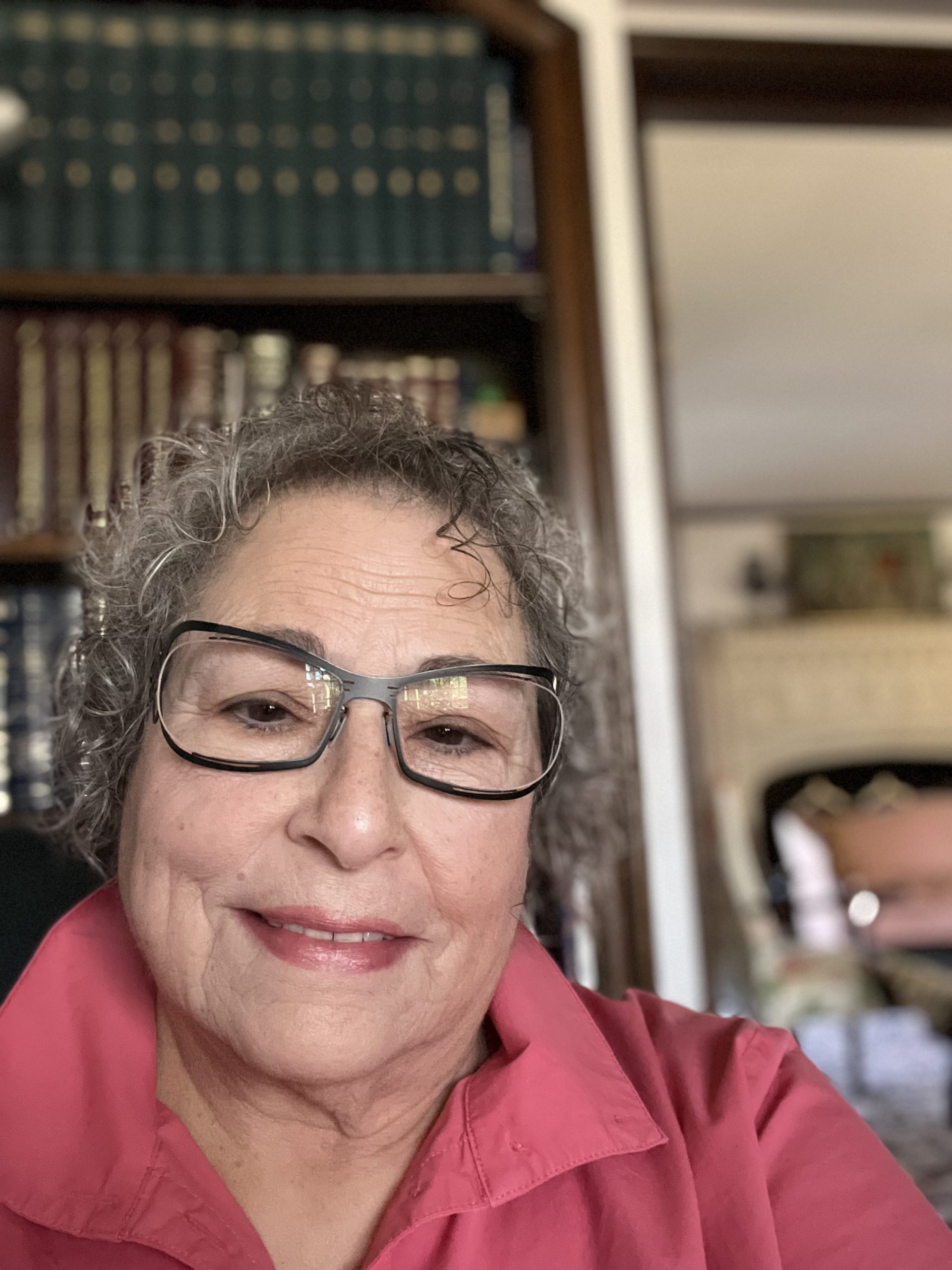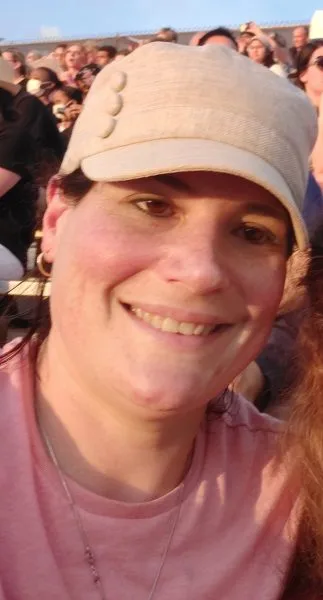Bava Kamma 14
וְלֹא קִבֵּל עָלָיו שְׁמִירַת נְזָקָיו.
but he did not undertake the responsibility of safeguarding the lender’s ox to prevent it from causing damage. Accordingly, the lender remains responsible for his ox, and if it caused damage to the borrower’s ox the lender is liable, as in any other case in which his ox caused damage.
אִי הָכִי, אֵימָא סֵיפָא: נִפְרְצָה בַּלַּיְלָה אוֹ שֶׁפְּרָצוּהָ לִסְטִים, וְיָצְתָה וְהִזִּיקָה – פָּטוּר. הָא בַּיּוֹם – חַיָּיב? הָא לֹא קִבֵּל עָלָיו שְׁמִירַת נְזָקָיו!
The Gemara asks: If that is so, say, and try to explain accordingly, the latter clause of the baraita: If the ox was safely enclosed and a wall broke open at night, or if bandits broke it open and the ox went out and caused damage, the bailee is exempt from liability. The Gemara infers: If it broke open during the day and then caused damage, he is liable. The Gemara asks: According to the interpretation offered in explanation of the previous clause, the baraita concerns a case in which one borrowed an ox but did not undertake the responsibility to prevent it from causing damage. If so, how can the latter clause imply that there are cases in which he is liable? If he did not undertake the responsibility of safeguarding the lender’s ox to prevent it from causing damage, he should never be liable for the damage that it caused.
הָכִי קָאָמַר: אִם קִבֵּל עָלָיו שְׁמִירַת נְזָקָיו – חַיָּיב. נִפְרְצָה בַּלַּיְלָה אוֹ שֶׁפְּרָצוּהָ לִסְטִים, וְיָצְתָה וְהִזִּיקָה – פָּטוּר.
The Gemara answers that the latter clause of the baraita concerns a different case than that of the previous clause. This is what the latter clause of the baraita is saying: If, by contrast, the borrower did undertake the responsibility of safeguarding the lender’s ox to prevent it from causing damage, if it causes damage, the borrower is liable. But if the ox was safely enclosed and the wall enclosing it broke open at night, or if bandits broke it open and the ox went out and caused damage, he is exempt.
אִינִי?! וְהָא תָּנֵי רַב יוֹסֵף: חֲצַר הַשּׁוּתָּפִים, וְהַפּוּנְדָּק – חַיָּיב בָּהֶן עַל הַשֵּׁן וְעַל הָרֶגֶל. תְּיוּבְתָּא דְּרַבִּי אֶלְעָזָר!
The Gemara returns to its prior discussion of the mishna’s statement concerning property designated for the joint use of the injured party and the one liable for the damage. The Gemara cited Rabbi Elazar’s opinion that each partner is exempt from liability for any damage that falls within the categories of Trampling or Eating that their ox caused to the other partner’s property. The Gemara challenges his opinion: Is that so? But didn’t Rav Yosef teach in a baraita: In a courtyard designated for the joint use of partners, or in an inn [pundak], one is liable for Eating and for Trampling caused by an ox of one partner to the property of the other. It would appear that this baraita is a conclusive refutation of the opinion of Rabbi Elazar.
אָמַר לָךְ רַבִּי אֶלְעָזָר: וְתִסְבְּרַאּ?! מַתְנְיָתָא מִי לָא פְּלִיגִי? וְהָתַנְיָא, אַרְבָּעָה כְּלָלוֹת הָיָה רַבִּי שִׁמְעוֹן בֶּן אֶלְעָזָר אוֹמֵר בְּנִזָּקִין: כֹּל שֶׁהוּא רְשׁוּת לַנִּיזָּק וְלֹא לַמַּזִּיק – חַיָּיב בַּכֹּל. דְּמַזִּיק וְלֹא לַנִּיזָּק – פָּטוּר מִכֹּל.
The Gemara answers: Rabbi Elazar could have said to you: But how can you understand that this baraita provides a refutation of my opinion? Are there not baraitot that disagree with regard to this issue? And it is taught in accordance with my opinion in a baraita in the Tosefta (1:9): Rabbi Shimon ben Elazar would state four principles with regard to the liability incurred based on where the damage occurs. With regard to any location that is the property of the injured party and is not the property of the one liable for the damage, the owner of an animal that causes damage is liable for all the damage caused there. If a place is the property of the one liable for the damage and is not the property of the injured party, the owner of an animal that causes damage is exempt for all the damage caused there.
לָזֶה וְלָזֶה, כְּגוֹן חֲצַר הַשּׁוּתָּפִים וְהַבִּקְעָה – פָּטוּר בָּהּ עַל הַשֵּׁן וְעַל הָרֶגֶל; עַל הַנְּגִיחָה וְעַל הַנְּגִיפָה וְעַל הַנְּשִׁיכָה וְעַל הָרְבִיצָה וְעַל הַבְּעִיטָה – תָּם מְשַׁלֵּם חֲצִי נֶזֶק, מוּעָד מְשַׁלֵּם נֶזֶק שָׁלֵם.
If a place is the property of both this one and that one, e.g., a courtyard designated for the joint use of partners or a field in the valley that is used by the public, the owner of an animal that causes damage is exempt for Eating and for Trampling performed by his animal in that place. But for goring, and for pushing, and for biting, and for crouching upon items in order to damage them, and for kicking, which are all subcategories of the primary category of Goring, if the ox is innocuous, the owner pays half the value of the damage, and if it is forewarned, he pays the full cost of the damage.
לֹא לָזֶה וְלֹא לָזֶה, כְּגוֹן חָצֵר שֶׁאֵינוֹ שֶׁל שְׁנֵיהֶם – חַיָּיב בּוֹ עַל הַשֵּׁן וְעַל הָרֶגֶל; עַל הַנְּגִיחָה וְעַל הַנְּשִׁיכָה וְעַל הַנְּגִיפָה וְעַל הָרְבִיצָה וְעַל הַבְּעִיטָה – תָּם מְשַׁלֵּם חֲצִי נֶזֶק, מוּעָד מְשַׁלֵּם נֶזֶק שָׁלֵם.
If a place where the damage occurs is the property of neither this one nor that one, e.g., a courtyard that is not owned by either of the two of them, the owner of an animal that causes damage is liable for Eating and for Trampling performed by his animal in that place. But for goring, and for pushing, and for biting, and for crouching upon items in order to damage them, and for kicking, which are all subcategories of the primary category of Goring, if the ox is innocuous, the owner pays half the value of the damage, and if it is forewarned, he pays the full cost of the damage.
קָתָנֵי מִיהַת, חֲצַר הַשּׁוּתָּפִין וְהַבִּקְעָה – פָּטוּר בָּהּ עַל הַשֵּׁן וְעַל הָרֶגֶל;
The Gemara notes that in any event the baraita teaches that in a courtyard designated for the joint use of partners or a field in the valley that is jointly owned, the owner of an animal that causes damage is exempt for Eating and for Trampling performed by his animal in that place. This baraita supports Rabbi Elazar’s opinion.
קַשְׁיָא אַהֲדָדֵי!
The Gemara comments: These baraitot are difficult, as they seem to contradict one another.
כִּי תַּנְיָא הָהִיא – בְּחָצֵר מְיוּחֶדֶת לָזֶה וְלָזֶה בֵּין לְפֵירוֹת בֵּין לִשְׁווֹרִים. הָהִיא דְּרַב יוֹסֵף – בְּחָצֵר מְיוּחֶדֶת לְפֵירוֹת, וְאֵינָהּ מְיוּחֶדֶת לִשְׁווֹרִים; דִּלְגַבֵּי שֵׁן – הָוְיָא לַהּ חֲצַר הַנִּיזָּק.
The Gemara explains: When that baraita is taught, it is with regard to a jointly owned courtyard, which under the terms of their partnership is designated for the use of both this one and that one, i.e., as partners, for bringing both produce and oxen there. Since both partners have a right to keep their oxen there, they are not liable for any damage their oxen cause in the jointly owned space. That baraita of Rav Yosef is taught with regard to a jointly owned courtyard, which under the terms of their partnership is designated for the purpose of bringing their produce there, but it is not designated for bringing oxen there. Accordingly, with regard to damage of the category of Eating caused by one partner’s ox to the other’s produce, it is equivalent to a courtyard owned exclusively by the injured party, and therefore he is liable.
דַּיְקָא נָמֵי – דְּקָתָנֵי הָכָא דּוּמְיָא דְפוּנְדָּק, וְקָתָנֵי הָתָם דּוּמְיָא דְבִקְעָה; שְׁמַע מִינַּהּ.
The Gemara notes: In accordance with this explanation, the language of each of these baraitot is also precise, as it teaches here, in the baraita of Rav Yosef, the case of a courtyard that is similar to an inn, where oxen are usually not allowed to be brought, and it teaches there, in the second baraita, the case of a courtyard that is similar to a field in the valley, where oxen are usually allowed to enter. Conclude from it that the Gemara’s distinction between the two baraitot is correct.
מַתְקֵיף לַהּ רַבִּי זֵירָא: כֵּיוָן דִּמְיוּחֶדֶת לְפֵירוֹת?! הָא בָּעֵינַן ״וּבִעֵר בִּשְׂדֵה אַחֵר״, וְלֵיכָּא!
Rabbi Zeira objects to this interpretation of Rav Yosef’s baraita: Since the courtyard is designated for both of them to keep their produce there, they should not be liable for damage caused by their oxen there, as in order for one to be liable don’t we need a case that fits the depiction of the verse: “And it consumed in a field of another” (Exodus 22:4), and since they both have the right to use the courtyard it does not fulfill this condition.
אֲמַר לֵיהּ אַבָּיֵי: כֵּיוָן דְּאֵינָהּ מְיוּחֶדֶת לִשְׁווֹרִים, ״שְׂדֵה אַחֵר״ קָרֵינָא בֵּיהּ.
Abaye said to him: Since it is not designated for them to keep oxen there, that is sufficient for it to be termed “a field of another.”
אֲמַר לֵיהּ רַב אַחָא מִדִּיפְתִּי לְרָבִינָא: לֵימָא מִדְּמַתְנְיָתָא לָא פְּלִיגִי, אָמוֹרָאֵי נָמֵי לָא פְּלִיגִי?
Given the distinction between the cases discussed in the baraitot, the Gemara reconsiders the dispute between Rav Ḥisda and Rabbi Elazar concerning the mishna’s statement about property whose use is designated for both the injured party and the one liable for the damage. Rav Aḥa of Difti said to Ravina: Let us say that from the fact that the baraitot do not disagree, as they are referring to different cases, so too, the amora’im, i.e., Rav Ḥisda and Rabbi Elazar, also do not disagree, as they are similarly referring to these different cases.
אֲמַר לֵיהּ: אִין. וְאִם תִּמְצָא לוֹמַר פְּלִיגִי – בְּקוּשְׁיָא דְּרַבִּי זֵירָא וּבְפֵירוּקָא דְאַבָּיֵי פְּלִיגִי.
Ravina said to him: Yes, that is correct. And even if you say that they disagree, their dispute does not concern every case of a jointly owned courtyard, as the Gemara had assumed; rather, their dispute concerns specifically a courtyard designated for the use of their produce, but not the use of their oxen. And they disagree whether to accept the difficulty raised by Rabbi Zeira, that such a courtyard cannot be considered “a field of another,” or whether to accept the resolution of Abaye, that it can be considered “a field of another.”
גּוּפָא – אַרְבָּעָה כְּלָלוֹת הָיָה רַבִּי שִׁמְעוֹן בֶּן אֶלְעָזָר אוֹמֵר בְּנִזָּקִין: כֹּל שֶׁהוּא רְשׁוּת לַנִּיזָּק וְלֹא לַמַּזִּיק – חַיָּיב בַּכֹּל.
§ The Gemara returns to the matter itself and analyzes the baraita in the Tosefta cited above. It states: Rabbi Shimon ben Elazar would state four principles with regard to the liability incurred based on where the damage was caused. With regard to any location that is the property of the injured party and is not the property of the one liable for the damage, the owner of an animal that causes damage is liable for all the damage caused there.
״עַל הַכֹּל״ לָא קָתָנֵי, אֶלָּא ״חַיָּיב בַּכֹּל״ – בְּכוּלֵּי[הּ] נֶזֶק;
The Gemara infers: The baraita does not teach: One is liable for any [al hakkol] damage caused there, which would suggest that one is liable for all types of damage. Rather, it teaches: One is liable for all [bakkol] the damage caused, which can be translated as: For the full cost of the damage. This indicates that even were one’s ox considered to be innocuous and caused damage of the category of Goring, which would generally incur liability for half the value of the damage, in this case the owner is liable for the full cost of the damage.
מַנִּי – רַבִּי טַרְפוֹן הִיא, דְּאָמַר: מְשׁוּנֶּה קֶרֶן בַּחֲצַר הַנִּיזָּק, נֶזֶק שָׁלֵם מְשַׁלֵּם.
Whose opinion is this? It is in accordance with the opinion of Rabbi Tarfon, who says: The halakha of cases of Goring performed by an innocuous animal, which is atypical, done in the courtyard of the injured party, is that the owner of the ox pays the full cost of the damage even if the ox is innocuous.
אֵימָא סֵיפָא: לֹא לָזֶה וְלֹא לָזֶה, כְּגוֹן חָצֵר שֶׁאֵינוֹ שֶׁל שְׁנֵיהֶם – חַיָּיב בָּהּ עַל הַשֵּׁן וְעַל הָרֶגֶל.
If this is so, say, and try to explain accordingly, the latter clause of the baraita: If a place where the damage occurs is the property of neither this one nor that one, e.g., a courtyard that is not owned by either of the two of them, the owner of an animal that causes damage is liable for Eating and for Trampling performed by his animal in that place.
מַאי ״לֹא לָזֶה וְלֹא לָזֶה״? אִילֵּימָא לֹא לָזֶה וְלֹא לָזֶה כְּלָל – אֶלָּא דְּאַחֵר; וְהָא בָּעֵינָא ״וּבִעֵר בִּשְׂדֵה אַחֵר״, וְלֵיכָּא!
The Gemara asks: What does the baraita mean by saying the property is of neither this one nor that one? If we say the intention of the baraita is that the property is of neither this one nor that one at all, but rather it belongs to another person, why should either partner be liable? But don’t I need a case that fits the depiction of the verse: “And it consumed in a field of another” (Exodus 22:4), which is understood to mean that the consumed produce belongs to the owner of the field in which the act of consumption occurred; and since the injured party does not have any rights to this place it does not fulfill this condition?
אֶלָּא פְּשִׁיטָא, לֹא לָזֶה וְלֹא לָזֶה – אֶלָּא דְּחַד; וְקָתָנֵי סֵיפָא: תָּם מְשַׁלֵּם חֲצִי נֶזֶק, וּמוּעָד מְשַׁלֵּם נֶזֶק שָׁלֵם;
Rather, it is obvious that the intention of the baraita is that the property is of neither this one nor that one together; rather, it belongs to only one of them, i.e., the injured party, and the latter clause teaches: If the ox is innocuous, the owner pays half the value of the damage, and if it is forewarned, he pays the full cost of the damage.
אֲתָאן לְרַבָּנַן, דְּאָמְרִי: מְשׁוּנֶּה קֶרֶן בַּחֲצַר הַנִּיזָּק, חֲצִי נֶזֶק הוּא דִּמְשַׁלֵּם!
If so, in the latter clause we arrive at the opinion of the Rabbis, who say: The halakha of cases of Goring performed by an innocuous animal, which is atypical, occurring in the courtyard of the injured party, is that the owner of the ox pays half the value of the damage.
רֵישָׁא רַבִּי טַרְפוֹן, וְסֵיפָא רַבָּנַן?!
The Gemara asks: Could it be that the first clause of the baraita is in accordance with the opinion of Rabbi Tarfon and the last clause is in accordance with the opinion of the Rabbis?
אִין; דְּהָא אֲמַר לֵיהּ שְׁמוּאֵל לְרַב יְהוּדָה: שִׁינָּנָא, שְׁבוֹק מַתְנִיתִין וְתָא אַבַּתְרַאי – רֵישָׁא רַבִּי טַרְפוֹן, וְסֵיפָא רַבָּנַן.
The Gemara answers: Yes, that is as Shmuel said to Rav Yehuda with regard to another mishna (15b): Shinnana, leave the mishna and follow after me and my interpretation that the first clause of the mishna is in accordance with the opinion of Rabbi Tarfon and the last clause is in accordance with the opinion of the Rabbis. In this baraita as well, the different clauses are taught in accordance with different Sages’ opinions.
רָבִינָא מִשְּׁמֵיהּ דְּרָבָא אָמַר: כּוּלַּהּ רַבִּי טַרְפוֹן הִיא; וּמַאי לֹא לָזֶה וְלֹא לָזֶה – לֹא לָזֶה וְלֹא לָזֶה לְפֵירוֹת, אֶלָּא דְּחַד; לָזֶה וְלָזֶה לִשְׁווֹרִים.
The Gemara presents a different interpretation of the baraita: Ravina said in the name of Rava: The entire baraita is in accordance with the opinion of Rabbi Tarfon, and what does it mean by saying that the property is of neither this one nor that one? The property does not belong both to this one and that one; rather, it is designated for the use of only one of them, for him to keep his produce there. Only the injured party has the right to keep his produce there. But it is designated both for this one and for that one, for them to keep their oxen there, as both have this right.
דִּלְגַבֵּי שֵׁן – הָוְיָא לַהּ חֲצַר הַנִּיזָּק, לְגַבֵּי קֶרֶן – הָוְיָא לַהּ רְשׁוּת הָרַבִּים.
Accordingly, with regard to damage of the category of Eating, the property is considered to be the courtyard of the injured party; therefore, the one responsible for the damage is liable to pay for the damage. By contrast, with regard to damage of the category of Goring, since they both have the right to keep their oxen there, the property is considered to be like a public domain, and therefore even Rabbi Tarfon agrees that if one’s innocuous ox causes damage there one is liable for only half the value of the damage.
אִי הָכִי, אַרְבָּעָה?! שְׁלֹשָׁה הָווּ!
The Gemara asks: If that is so, does the baraita list four principles? There are only three. In other words, according to the way Ravina explains the latter clause, i.e., the fourth principle, it does not teach anything that is not already known from the first three principles, as the fact that one is liable for Eating and Trampling in property designated for the use of the injured party is explicitly stated in the first principle, and the fact that one is liable for only half the cost of the damage in a case of Goring in a jointly owned courtyard is expressed in the third principle.
אָמַר רַב נַחְמָן בַּר יִצְחָק:
Rav Naḥman bar Yitzḥak said:
שְׁלֹשָׁה כְּלָלוֹת – בְּאַרְבָּעָ[ה] מְקוֹמוֹת.
There are only three distinct principles, but they are listed as four cases because they apply in four different places.
מַתְנִי׳ שׁוּם כֶּסֶף, שָׁוֶה כֶּסֶף. בִּפְנֵי בֵּית דִּין, וְעַל פִּי עֵדִים – בְּנֵי חוֹרִין, בְּנֵי בְרִית. וְהַנָּשִׁים בִּכְלַל הַנֶּזֶק. וְהַנִּיזָּק וְהַמַּזִּיק בְּתַשְׁלוּמִין.
MISHNA: The determination of payment of damages is made by monetary appraisal. One pays with items worth money. This halakha applies before a court. And it is based upon the testimony of witnesses who are free men, i.e., men who are not Canaanite slaves, and who are members of the covenant, i.e., Jews. And women are included in the halakhot of damages in the same way as men. And both the injured party and the one liable for the damage are involved in the payment. The Gemara will explicate each of these principles.
גְּמָ׳ מַאי ״שׁוּם כֶּסֶף״?
GEMARA: What is the meaning of: The determination of payment of damages is made by monetary appraisal?
אָמַר רַב יְהוּדָה: שׁוּם זֶה לֹא יְהֵא אֶלָּא בְּכֶסֶף.
Rav Yehuda says: This appraisal of the damage caused should be made only in terms of the monetary value of the damage.
תְּנֵינָא לְהָא דְּתָנוּ רַבָּנַן: פָּרָה שֶׁהִזִּיקָה טַלִּית, וְטַלִּית שֶׁהִזִּיקָה פָּרָה – אֵין אוֹמְרִים: תֵּצֵא פָּרָה בְּטַלִּית וְטַלִּית בְּפָרָה, אֶלָּא שָׁמִין אוֹתָהּ בְּדָמִים.
The Gemara notes: We learn, in this mishna, this halakha that the Sages taught explicitly: In a case in which a cow damaged a cloak, and the cloak injured the cow, e.g., the cow tread on it, thereby damaging it, and it became entangled in the cow’s legs, causing the cow to trip, one does not say that it may be presumed that the damage to the cow is offset by the damage to the cloak and the damage to the cloak is offset by the damage to the cow, and therefore the owners of both are exempt from any payment. Rather, the court appraises separately the damage caused to each side in terms of its monetary value and only then calculates to what extent the liabilities offset each other.
״שָׁוֶה כֶּסֶף״ –
§ The mishna continues: With items worth money; to what does this refer?
דְּתָנוּ רַבָּנַן: ״שָׁוֶה כֶּסֶף״ – מְלַמֵּד שֶׁאֵין בֵּית דִּין נִזְקָקִין אֶלָּא לִנְכָסִים שֶׁיֵּשׁ לָהֶן אַחְרָיוּת. אֲבָל אִם קָדַם נִיזָּק וְתָפַס מִטַּלְטְלִין – בֵּית דִּין גּוֹבִין לוֹ מֵהֶן.
This is as the Sages taught in a baraita: Payment is made with items worth money. This teaches that the court attends to the collection of damages only in order to collect from property that serves as a guarantee, i.e., land. But if the injured party proceeded, of his own accord, to seize movable property from the one liable for the damage, the court collects damages for him from those items he seized. According to the baraita, the phrase: Items worth money, is referring to land.
אָמַר מָר: ״שָׁוֶה כֶּסֶף״ – מְלַמֵּד שֶׁאֵין בֵּית דִּין נִזְקָקִין אֶלָּא לִנְכָסִים שֶׁיֵּשׁ לָהֶן אַחְרָיוּת. מַאי מַשְׁמַע?
The Gemara analyzes this: The Master said in the baraita: Payment is made with items worth money. This teaches that the court attends to the collection of damages only in order to collect from property that serves as a guarantee, i.e., land. The phrase: Items worth money, therefore, is used as a term for land. The Gemara asks: From where is this inferred?
אָמַר רַבָּה בַּר עוּלָּא: דָּבָר הַשָּׁוֶה כֹּל כֶּסֶף. מַאי נִיהוּ? דָּבָר שֶׁאֵין לוֹ אוֹנָאָה. עֲבָדִים וּשְׁטָרוֹת נָמֵי אֵין לָהֶן אוֹנָאָה!
Rabba bar Ulla says that the phrase: Items worth money, is referring to something that is worth any amount of money, and what is that? It is something that is not subject to price fraud, which is the halakha with regard to land. Unlike the sale of movable property, the sale of land is valid irrespective of the sum for which the land is sold. The Gemara challenges this explanation: But slaves and documents are also not subject to price fraud, and yet these are not included in the phrase: Items worth money, as the court does not collect payments of damages from them.
אֶלָּא אָמַר רַבָּה בַּר עוּלָּא: דָּבָר הַנִּקְנֶה בְּכֶסֶף. עֲבָדִים וּשְׁטָרוֹת נָמֵי נִקְנִין בְּכֶסֶף!
Rather, Rabba bar Ulla said: The phrase is referring to something that is acquired with money, which is the halakha with regard to land but not with regard to movable property (see Kiddushin 26a). The Gemara rejects this explanation: But slaves and documents are also acquired with money.
אֶלָּא אָמַר רַב אָשֵׁי: ״שָׁוֶה כֶּסֶף״ – וְלֹא כֶּסֶף, וְהָנֵי כּוּלְּהוּ כֶּסֶף נִינְהוּ.
Rather, Rav Ashi said: The phrase is referring to something that is worth money, but is not actually money, and all these things, i.e., movable property, slaves, and documents, are considered like actual money because they have the defining characteristics of money in that they are valuable and portable.
רָמֵי לֵיהּ רַב יְהוּדָה בַּר חִינָּנָא לְרַב הוּנָא בְּרֵיהּ דְּרַב יְהוֹשֻׁעַ, תָּנָא: ״שָׁוֶה כֶּסֶף״ – מְלַמֵּד שֶׁאֵין בֵּית דִּין נִזְקָקִין אֶלָּא לִנְכָסִים שֶׁיֵּשׁ לָהֶן אַחְרָיוּת. וְהָתַנְיָא: ״יָשִׁיב״ – לְרַבּוֹת שָׁוֶה כֶּסֶף, וַאֲפִילּוּ סוּבִּין!
Rav Yehuda bar Ḥinnana raises a contradiction to the opinion of Rav Huna, son of Rav Yehoshua: In the baraita cited earlier it is taught: The mishna’s statement that payment is made with items worth money teaches that the court attends to the collection of damages only in order to collect from property that serves as a guarantee, i.e., land. But it is taught also in another baraita: The verse states the superfluous phrase: “He shall recompense” (Exodus 21:34), to include items worth money, and even bran, a relatively inferior commodity, is accepted as a valid form of payment. The first baraita teaches that only land is a valid form of payment, whereas the second baraita teaches that one may pay even with movable property.
הָכָא בְּמַאי עָסְקִינַן – בְּיַתְמֵי.
The Gemara answers: With what are we dealing here in the baraita that teaches that the court collects damages only from land? We are dealing with a case where damages are collected from orphans whose father was liable to pay damages. The baraita teaches that the liability inherited by the orphans applies only to the land they inherited from their father as it is liened to their father’s debts.
אִי בְּיַתְמֵי, אֵימָא סֵיפָא: אִם קָדַם נִיזָּק וְתָפַס מִטַּלְטְלִין – בֵּית דִּין גּוֹבִין לוֹ מֵהֶן. אִי בְּיַתְמֵי, אַמַּאי בֵּית דִּין גּוֹבִין לוֹ מֵהֶן?
The Gemara asks: If the baraita is referring to collection from orphans, say, and try to explain accordingly, the latter clause of the baraita: But if the injured party proceeded, of his own accord, to seize movable property from the one liable for the damage, the court collects damages for him from those items he seized. The Gemara asks: If, as suggested, the baraita is referring to collection from orphans, why does the court collect damages for him from those items he seized, as the father’s movable property is not liened to his debts?
כִּדְאָמַר רָבָא אָמַר רַב נַחְמָן: שֶׁתָּפַס מֵחַיִּים; הָכָא נָמֵי – שֶׁתָּפַס מֵחַיִּים.
The Gemara answers: The case is like that which Rava says that Rav Naḥman says with regard to a mishna (Ketubot 84a), which teaches that creditors who seize movable property as payment for a debt may keep those items: That is referring to a case in which he seized the property while the debtor was still alive. Here also, the baraita is referring to a case in which he seized the property while the one liable for the damage was still alive.
״בִּפְנֵי בֵּית דִּין״ –
§ The mishna continues: Before a court. What does this phrase mean?
פְּרָט לְמוֹכֵר נְכָסָיו וְאַחַר כָּךְ הוֹלֵךְ לְבֵית דִּין.
This phrase should be understood as a qualification of the previous phrase in the mishna that teaches, as the Gemara explained, that a court collects damages only from land. The mishna then teaches that the court collects only from land that is still in the possession of the one liable for the damage when he appears in court. This excludes a case where the one liable for the damage sells his landed property and afterward goes to court. Since at the time of the hearing he no longer owns land, the court does not collect damages from it.
שְׁמַע מִינַּהּ – לָוָה וּמָכַר נְכָסָיו, וְאַחַר כָּךְ בָּא לְבֵית דִּין, אֵין בֵּית דִּין גּוֹבִין לוֹ מֵהֶן?!
The Gemara challenges this: Should we conclude from the mishna that if one borrows money and then sells his landed property, and afterward he goes to the court, the court does not collect the loan from those landed properties that he sold? This is certainly incorrect, as the creditor has a lien on the debtor’s property from the time that he borrows the money.
אֶלָּא פְּרָט לְבֵית דִּין הֶדְיוֹטוֹת.
Rather, the phrase: Before a court, should be understood as an independent clause that excludes a court of non-ordained judges [hedyotot] from judging all types of damages, as the payment for certain types of damage is considered to be a fine, and only expert judges who have been ordained are able to impose fines.
״עַל פִּי עֵדִים״ –
§ The mishna continues: Payment is made based upon the testimony of witnesses.
פְּרָט לְמוֹדֶה בִּקְנָס וְאַחַר כָּךְ בָּאוּ עֵדִים, שֶׁהוּא פָּטוּר.
The Gemara explains: This clause is stated to exclude from liability one who admits he is liable to pay a fine, even if witnesses come afterward and testify that he is liable to pay it. The mishna teaches that he is nevertheless exempt, due to his admission.
הָנִיחָא לְמַאן דְּאָמַר: מוֹדֶה בִּקְנָס וְאַחַר כָּךְ בָּאוּ עֵדִים – פָּטוּר. אֶלָּא לְמַאן דְּאָמַר: מוֹדֶה בִּקְנָס וְאַחַר כָּךְ בָּאוּ עֵדִים – חַיָּיב, מַאי אִיכָּא לְמֵימַר?
The Gemara asks: This works out well according to the one who says: One who admits he is liable to pay a fine is exempt, even if witnesses come afterward and testify to his liability. But according to the one who says: With regard to one who admits he is liable to pay a fine and then witnesses come afterward and testify that he is guilty, he is liable to pay the fine, what is there to say in explanation of this clause of the mishna?
סֵיפָא אִצְטְרִיךְ לֵיהּ –
The Gemara answers: This clause does not serve to exclude some other case; rather, it is needed to preface the latter clause that teaches that the only people who are accepted as witnesses in cases of damages are both



